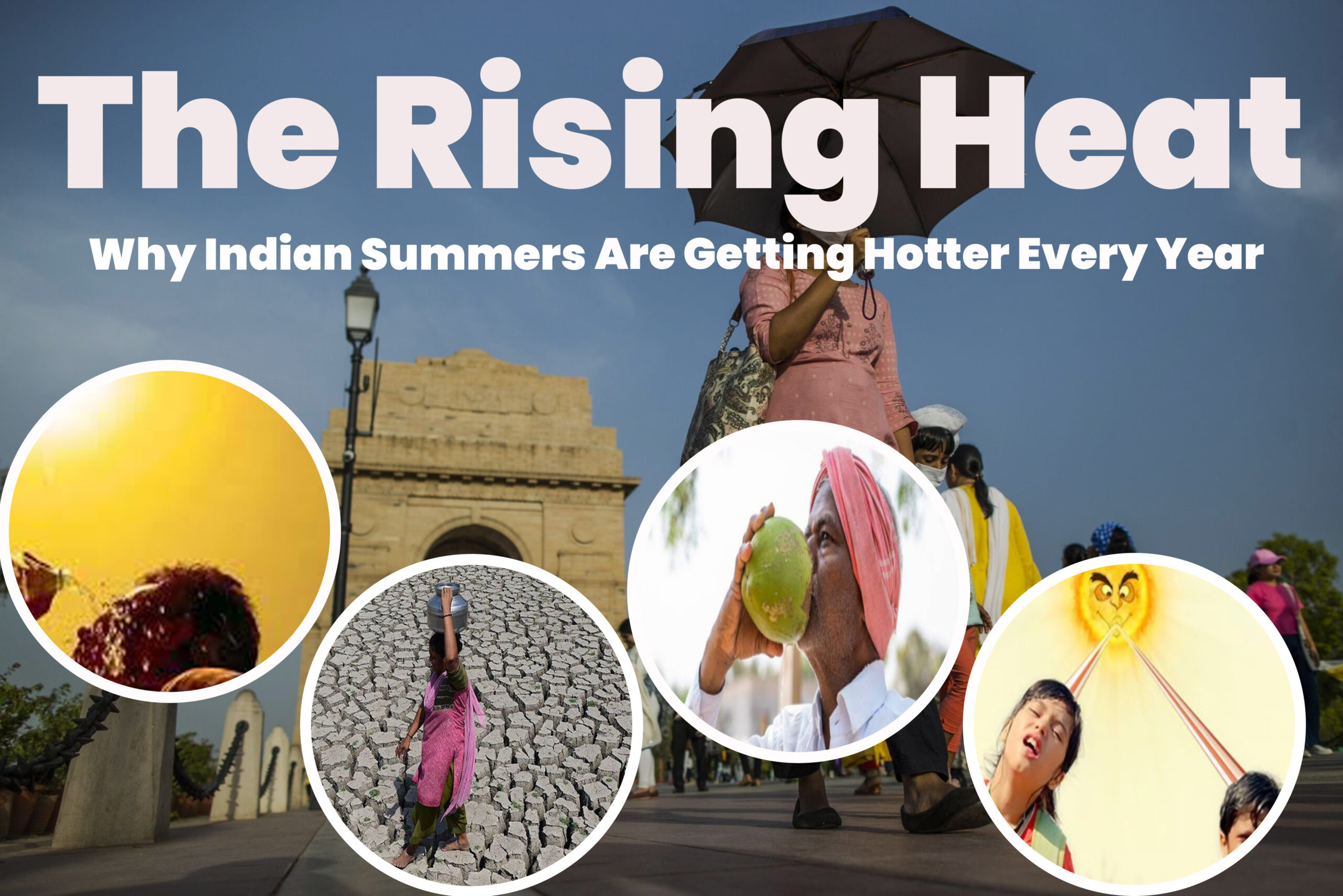India has always been known for its scorching summers, but in recent years, the intensity of heatwaves has been increasing alarmingly. Cities are recording unprecedented temperatures, and rural areas are struggling with water shortages and crop failures. But what is causing this significant rise in summer temperatures in India? Let’s explore the key factors contributing to this growing crisis.
1. Climate Change and Global Warming
One of the primary reasons behind the rising summer heat in India is climate change. The increase in greenhouse gas emissions, particularly carbon dioxide (CO₂) and methane, is causing a steady rise in global temperatures. India, being one of the most populated and rapidly developing nations, has seen an increase in industrial activities, vehicle emissions, and deforestation, all of which contribute to global warming.
2. Urbanization and the Heat Island Effect
The rapid expansion of cities has led to what is known as the Urban Heat Island (UHI) effect. Concrete buildings, asphalt roads, and reduced greenery absorb and retain more heat than natural landscapes, making urban areas significantly hotter than surrounding rural regions. The lack of green spaces and increasing vehicular emissions further intensify the problem.
3. Deforestation and Land Degradation
Forests play a crucial role in regulating temperatures by providing shade and facilitating rainfall. However, deforestation for agriculture, urban development, and industrial purposes has disrupted the natural balance. With fewer trees to absorb carbon dioxide and cool the surroundings, temperatures continue to rise.
4. Water Crisis and Drying Rivers
Water bodies like rivers, lakes, and ponds help moderate temperatures. However, many rivers in India are drying up due to excessive water consumption, pollution, and climate change. The declining water levels lead to reduced evaporation, which in turn contributes to hotter summers.
5. Increasing Frequency of Heatwaves
India has witnessed a sharp rise in the frequency and intensity of heatwaves. Regions like Rajasthan, Gujarat, and parts of northern India often experience temperatures soaring above 45°C. The Indian Meteorological Department (IMD) has reported that heatwaves have become longer and more intense over the last few decades.
6. Changing Monsoon Patterns
The monsoon plays a vital role in cooling down the Indian subcontinent. However, erratic monsoon patterns caused by climate change have led to longer dry spells and delayed rainfall. This results in prolonged periods of extreme heat, making summers harsher.
How Can We Address This Growing Problem?
While global efforts are needed to combat climate change, there are several measures India can take to mitigate the effects of rising temperatures:
- Afforestation and Reforestation: Planting more trees can help absorb CO₂ and provide much-needed shade in cities and rural areas.
- Sustainable Urban Planning: Incorporating more green spaces, reflective roofs, and water bodies in urban planning can reduce the heat island effect.
- Water Conservation: Protecting and reviving water bodies through rainwater harvesting and efficient water management can help regulate temperatures.
- Renewable Energy Adoption: Shifting from fossil fuels to renewable energy sources like solar and wind can reduce carbon emissions.
- Public Awareness: Educating people about climate change and sustainable living can encourage more individuals to contribute to the solution.
Conclusion
The rising summer temperatures in India are a clear warning sign of the impact of climate change and human activities on the environment. While the situation is alarming, proactive steps can be taken to slow down and possibly reverse the damage. A combined effort from the government, businesses, and individuals is crucial to ensure a sustainable and livable future for the coming generations.




